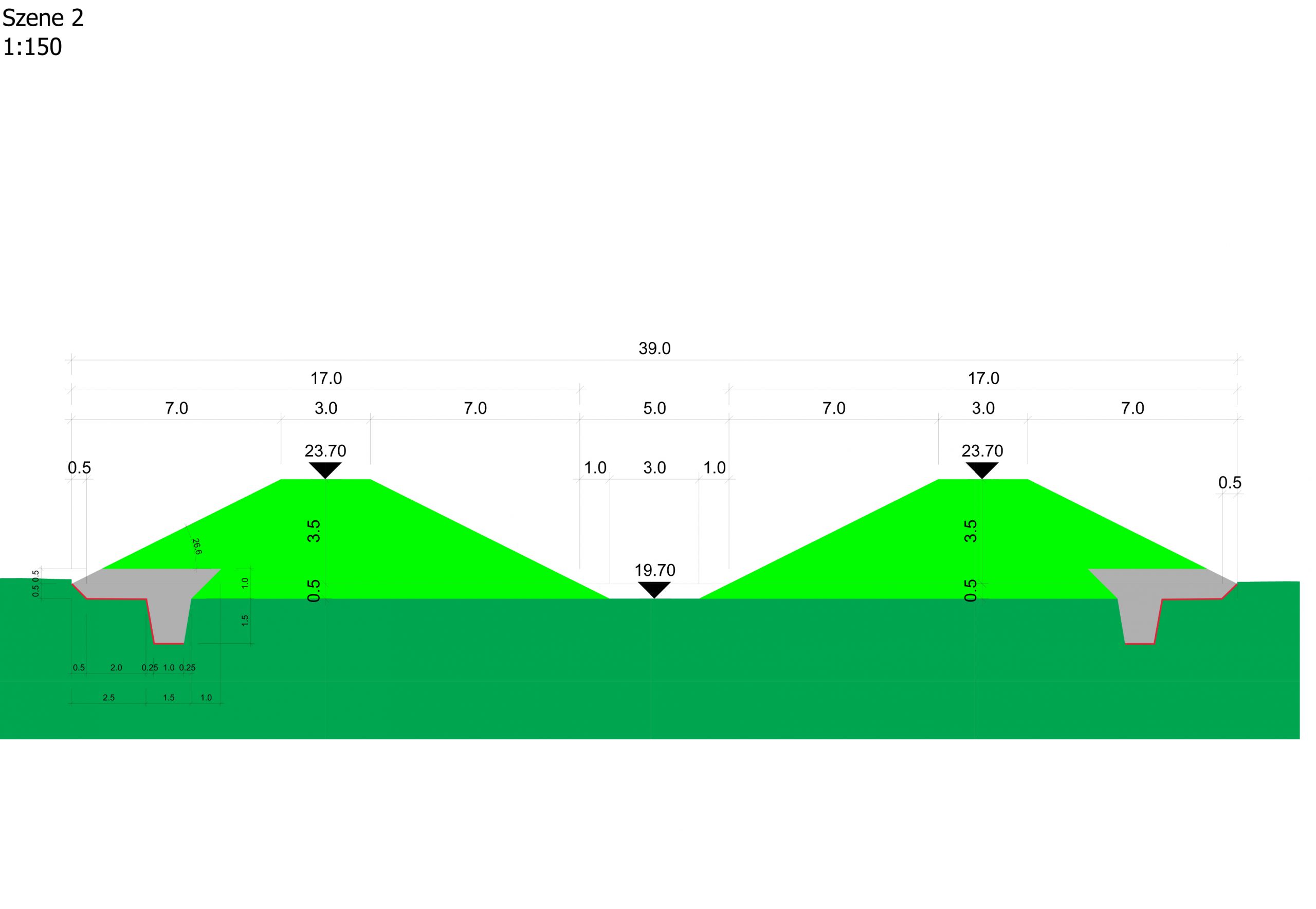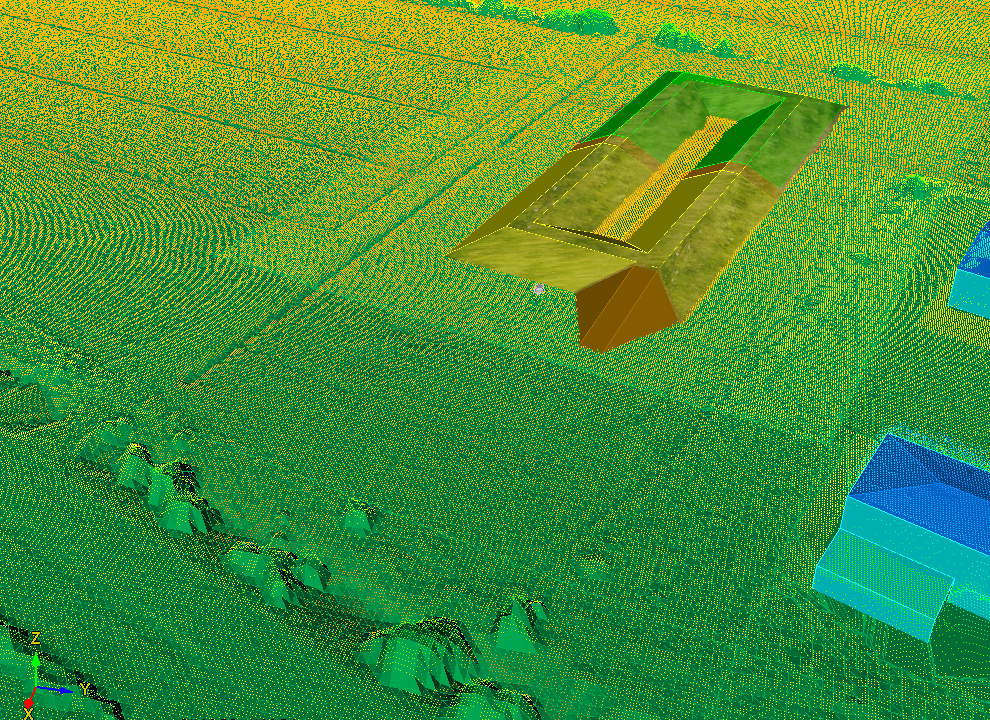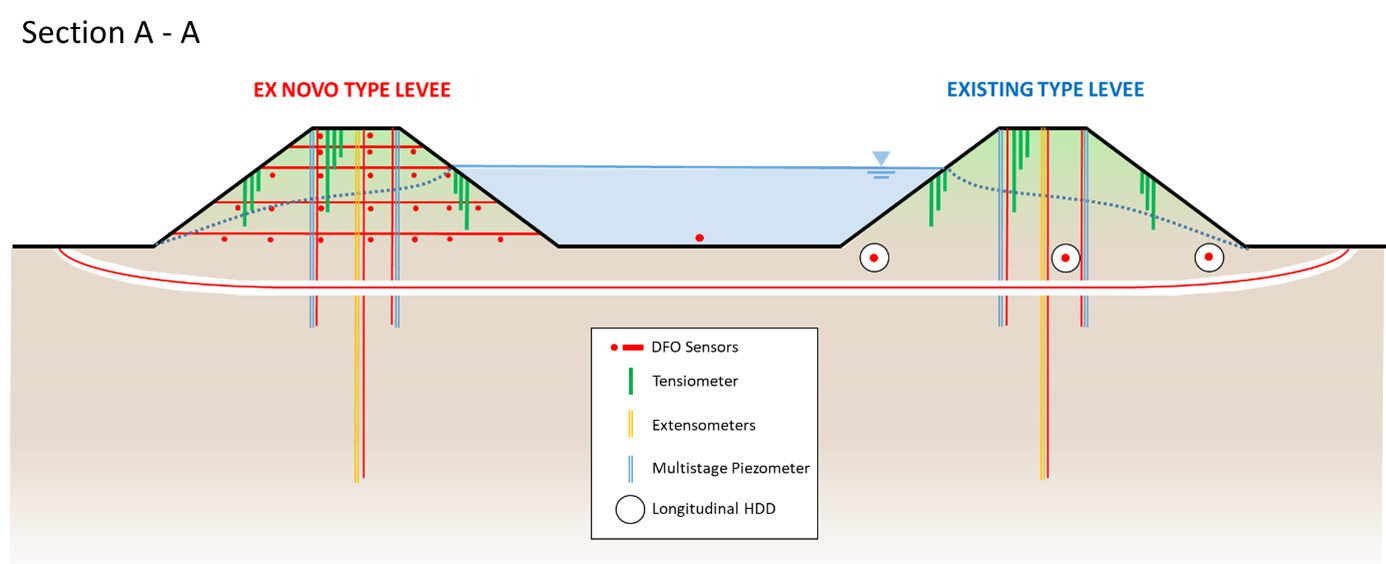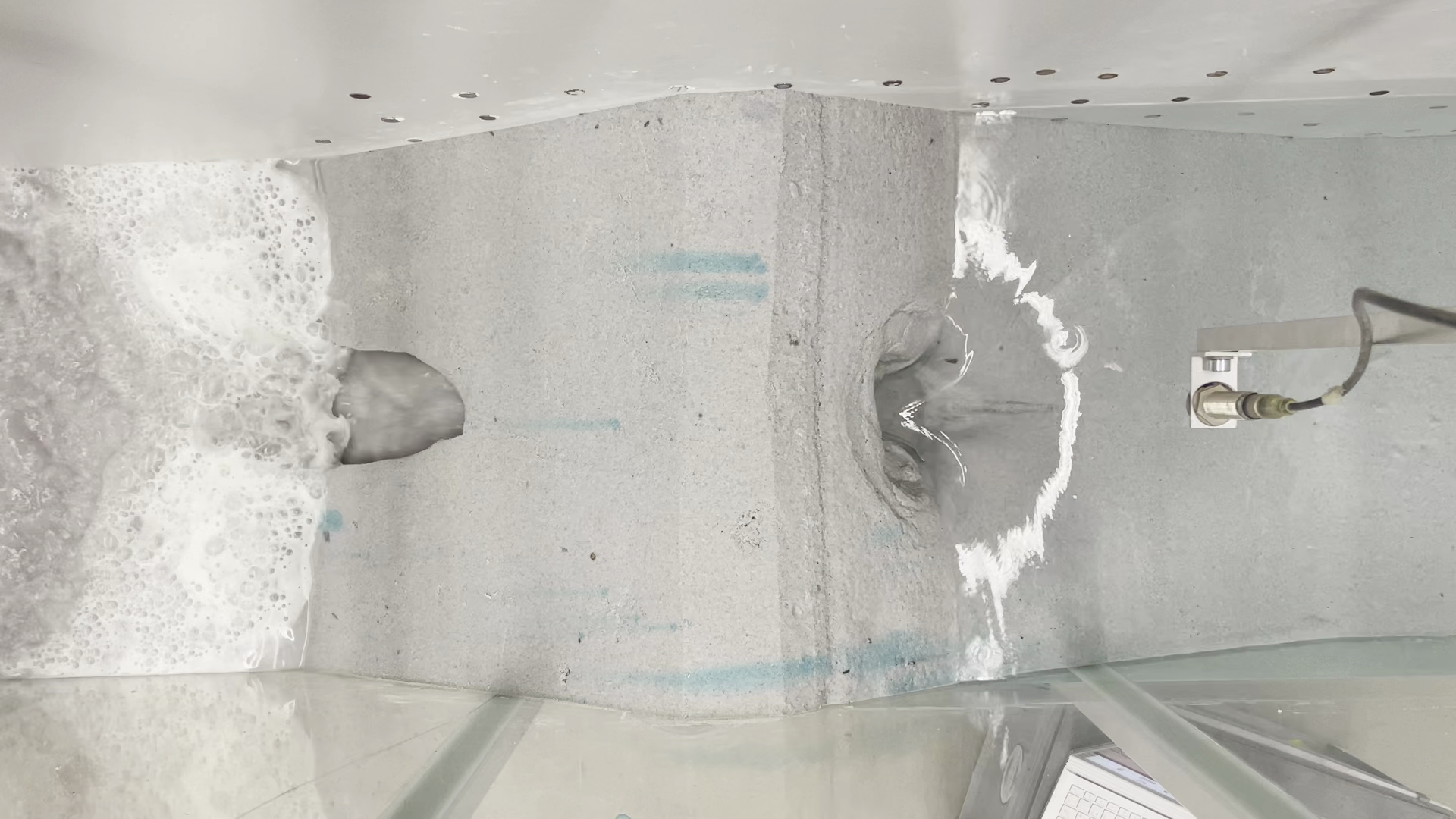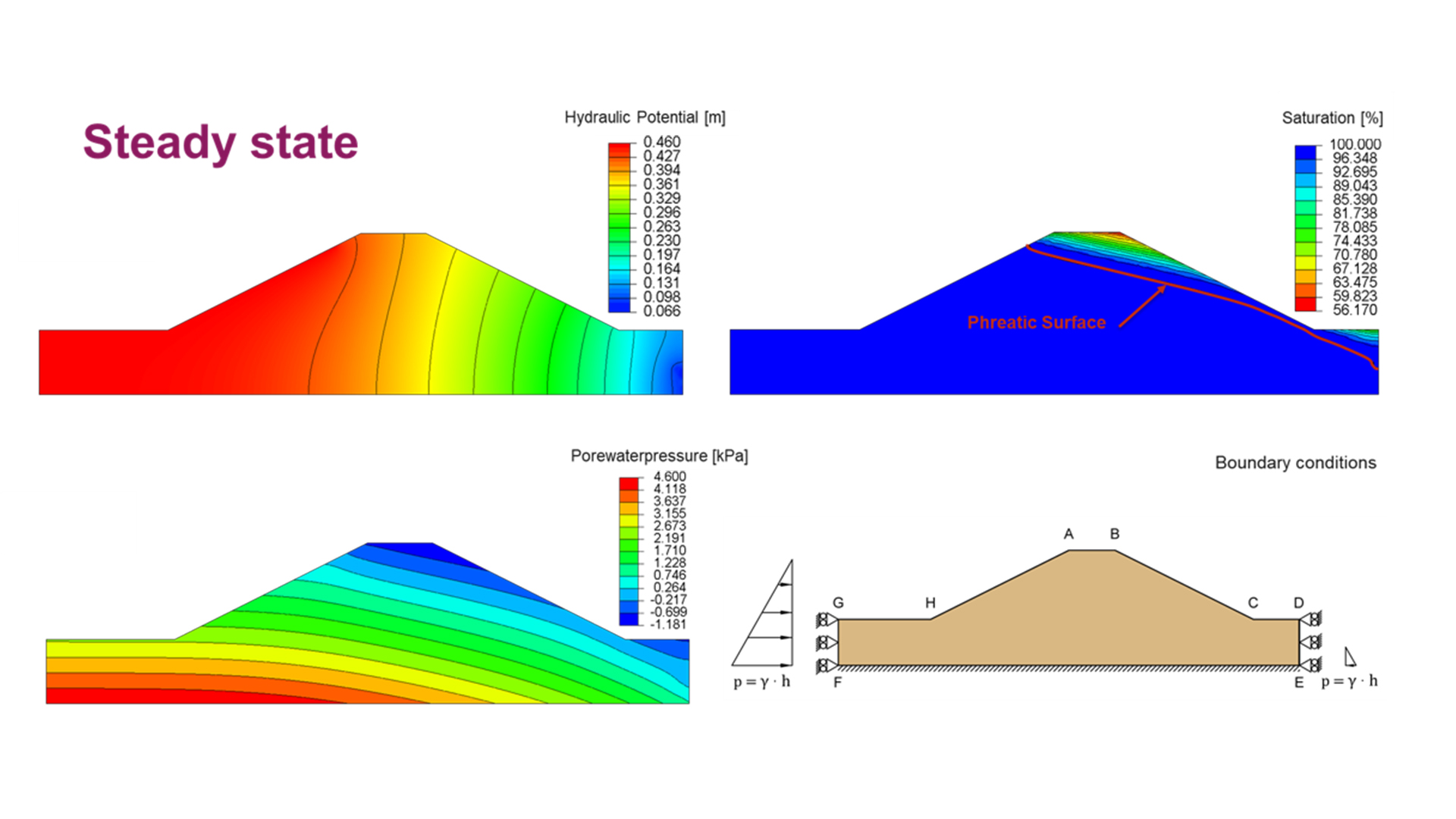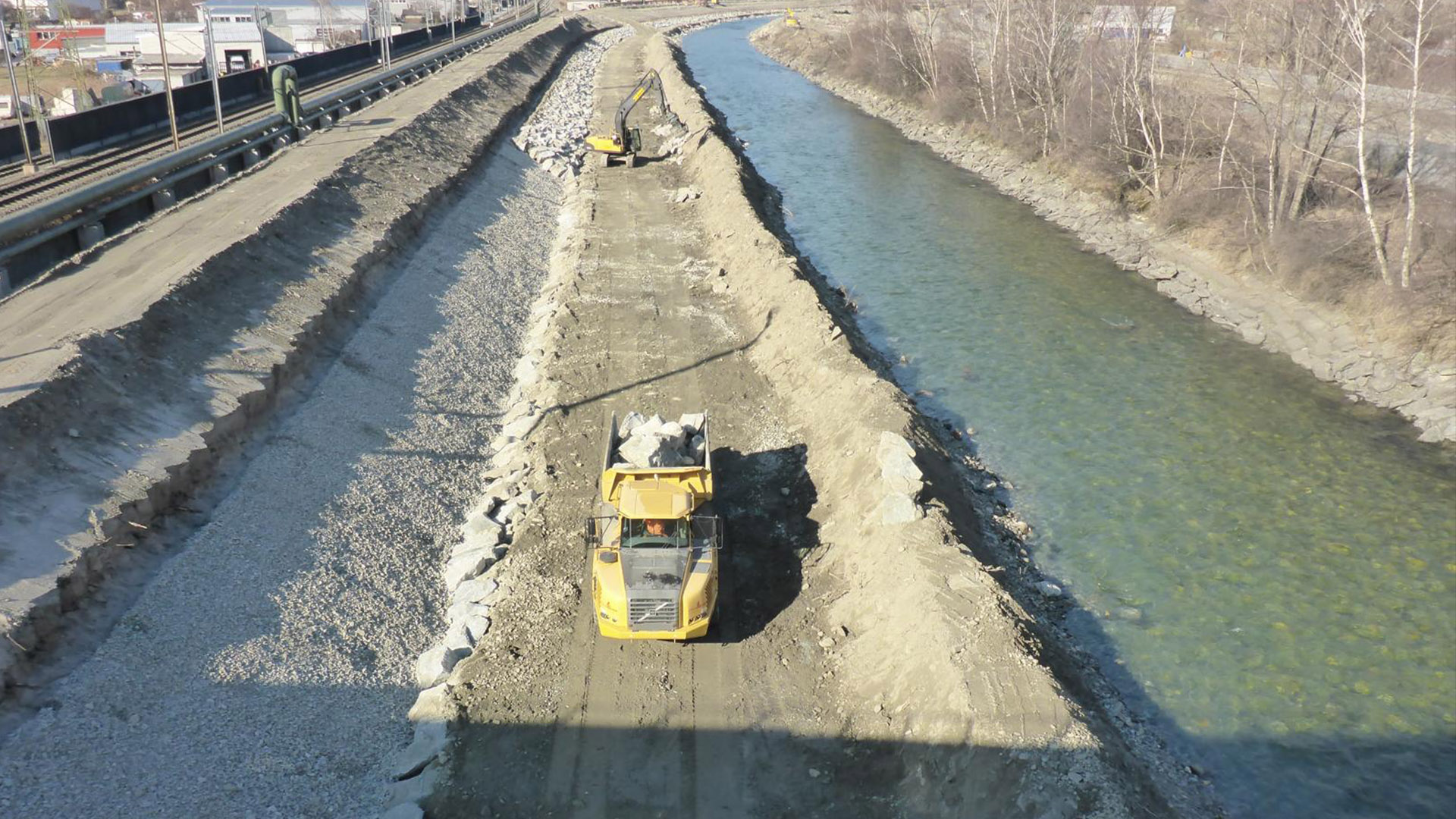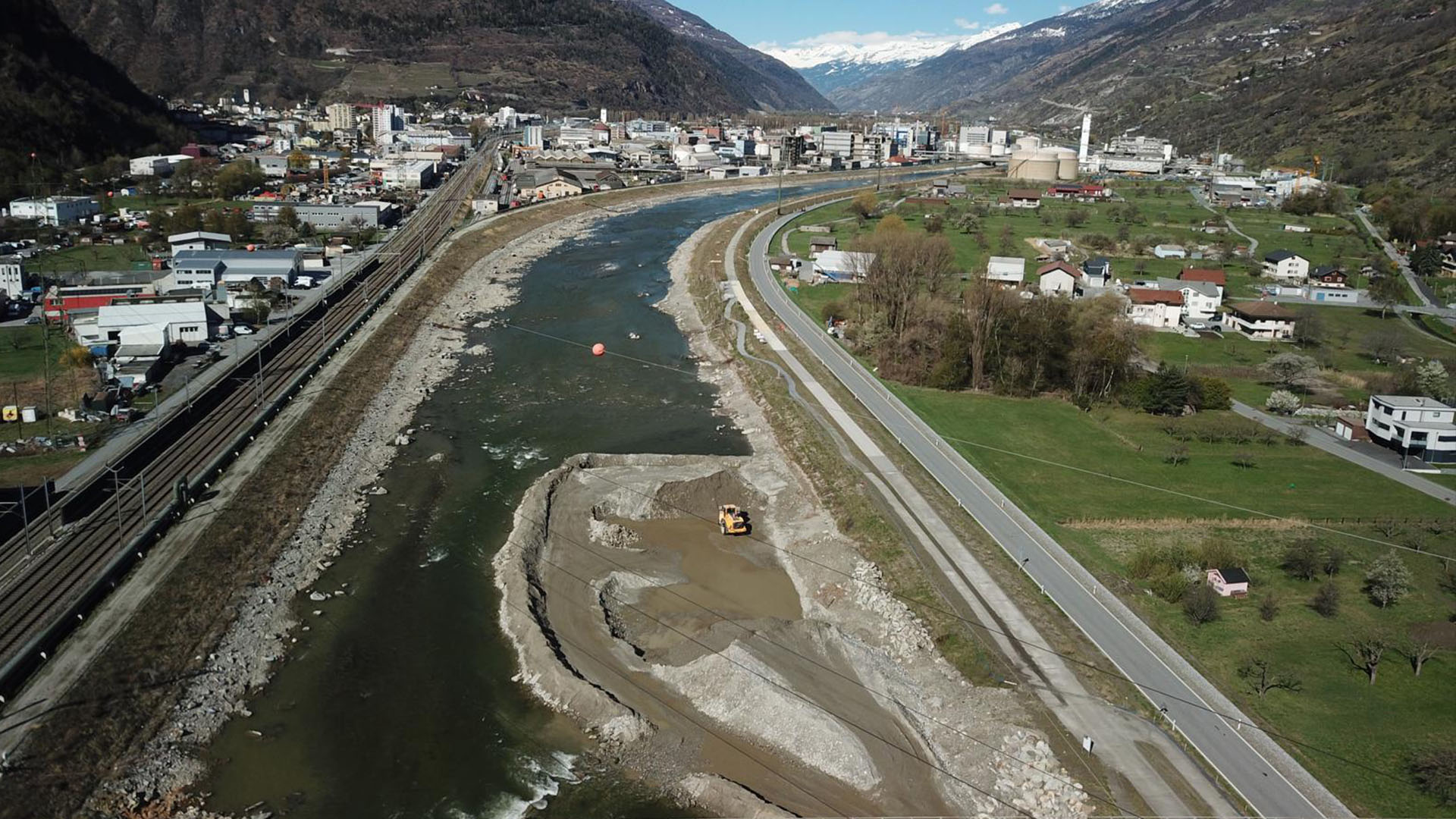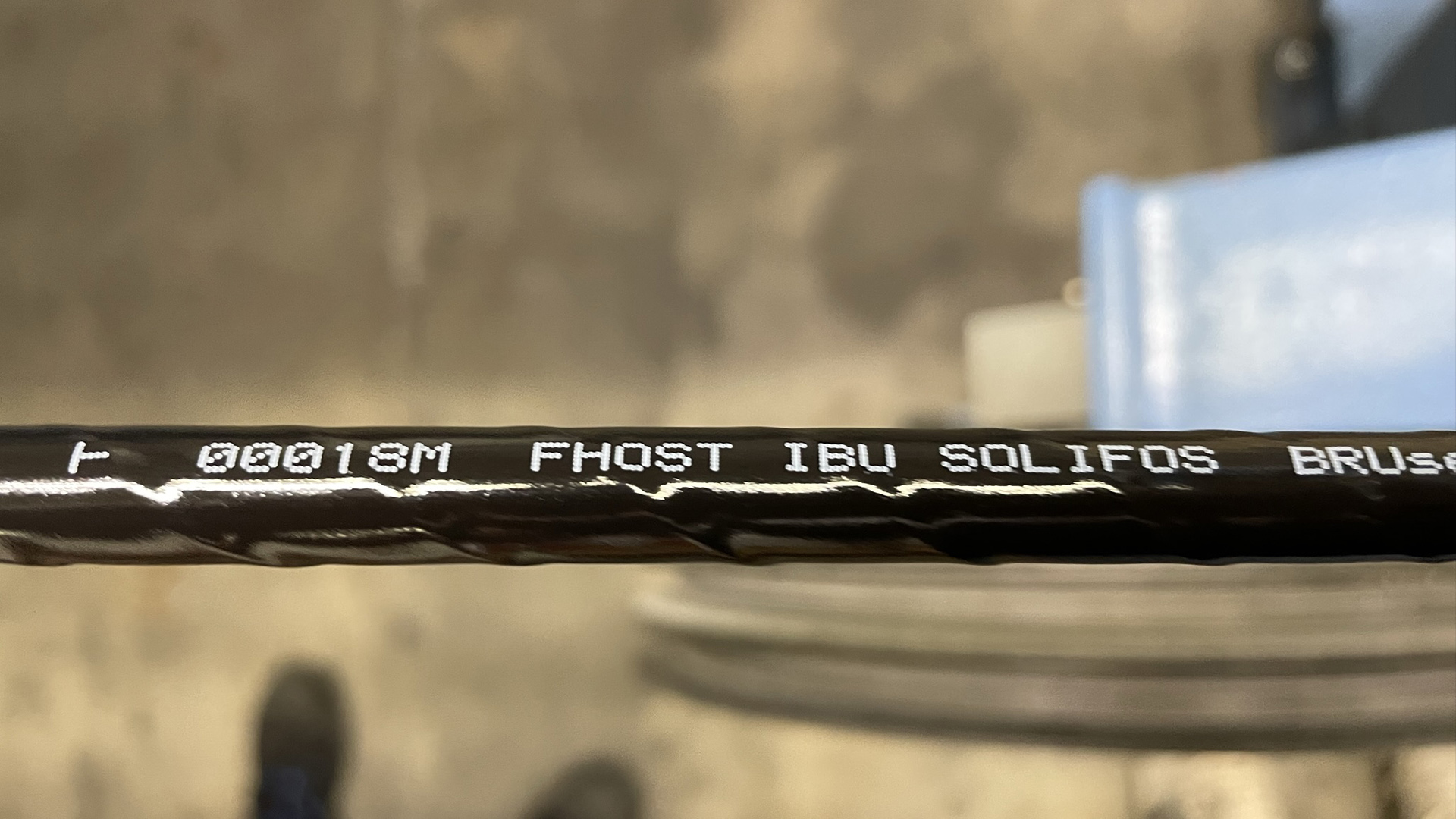Fibra Dike
Full scale testing
Validation of the new DFO sensor in an experimental test field (full-scale model)
Validation
In order to validate the implementation of the new monitoring DFO system, a full-scale experimental embankment is built at the Boretto facilities near Parma (“Polo Scientifico”) of AIPo.
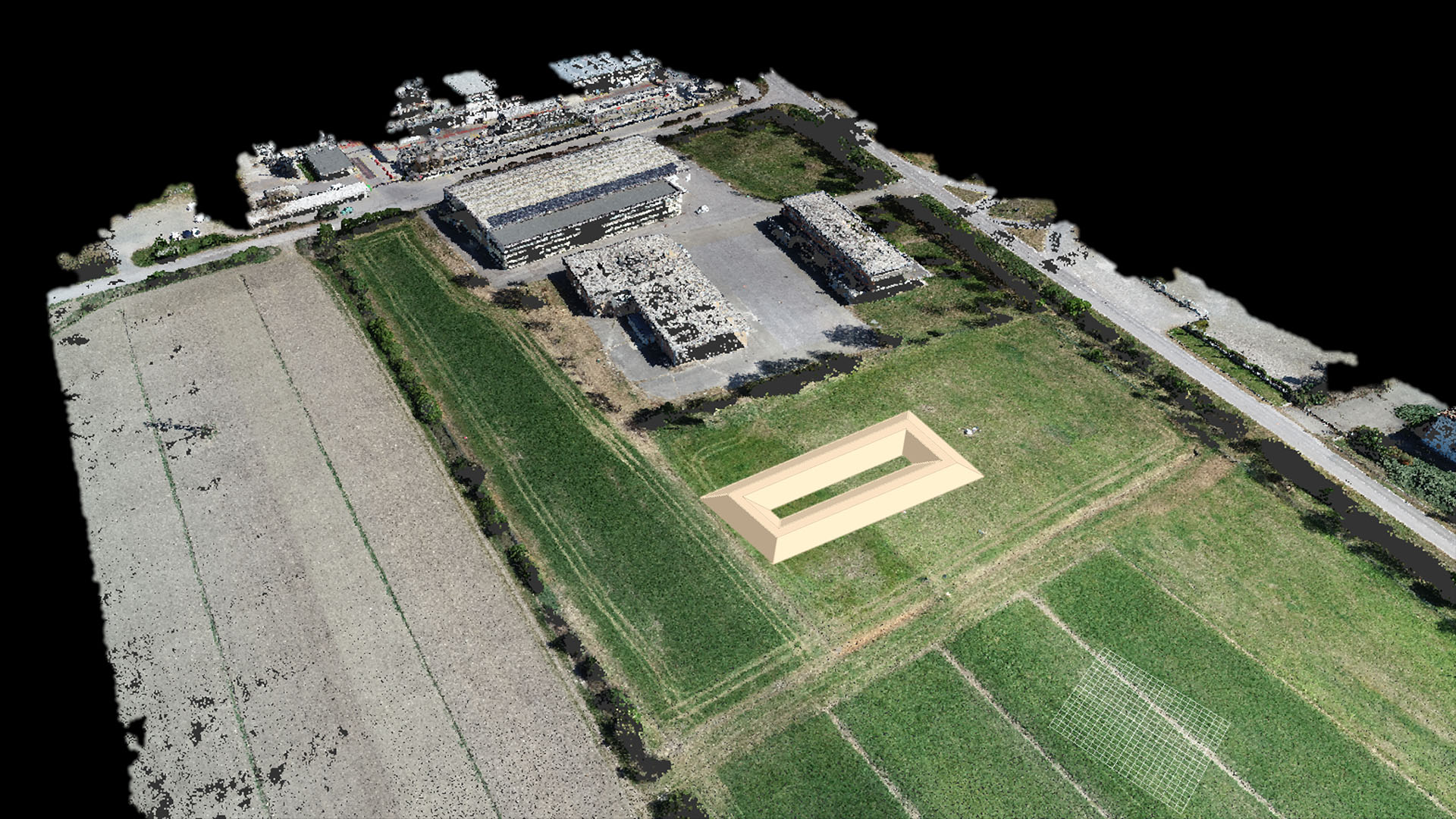

Conditions
In order to validate the implementation of the new monitoring DFO system, a full-scale experimental embankment is built at the Boretto facilities near Parma (“Polo Scientifico”) of AIPo. An artificial rectangular basin inside four levees is instrumented with DFO sensors, and traditional sensors (i.e., tensiometers, extensometers, and piezometer). The basin is filled with groundwater pumped from an existing well.
The experimental embankment is 85 m long and 35 m wide. The embankment is designed with a 1:2 slope and a total height of 3.5 m above ground level. The embankment is built with two different types of soil, silt and silty sand, which are the typical materials adopted for the construction of the Po (silt) and the Rhone (silty sand) levees.
The DFO monitoring system should be applicable to new structures as well as to existing ones; hence the idea of dividing the experimental embankment into two parts: an “ex novo” type and an “old” or “existing” type, where the sensors is placed after the construction.
The new DFO system is installed in the existing levee type with the horizontal directional drilling (HDD) technique as in current telecommunications practice. The drilling crosses the test basin longitudinally for 85 m and transversally for 35 m. The new DFO sensor installed in two different directions allows the seepage regime, parallel and perpendicular to the flow direction, to be measured. This section of the test embankment should simulate the real installation conditions of an existing embankment on which the DFO monitoring system can only be placed at specific points and with non-destructive techniques. In addition to the feasibility of such an installation, it is crucial to demonstrate that this method does not induce or facilitate piping along the new sensor.
The proposed extensive instrumentation should allow the optimal layout of the DFO to be identified; “optimal” means installing the minimum number of sensors in the best locations to obtain sufficient data to detect any dam stability issues, e.g., internal erosion.
Testing
The DFO monitoring system is tested under different hydraulic conditions to verify the installed sensor real response. The obtained data are subsequently integrated into an analytical and numerical model to interpret and evaluate the dam risk. Several tests with different hydraulic conditions are conducted in agreement with the AIPo authority, briefly described as follows:
- Series of tests (lasting about 24 hours) with hydraulic conditions simulating the hydrographs of real floods in Swiss rivers (e.g., Rhone)
- Series of tests (lasting several days) with the persistence of higher water levels by simulating long flood hydrographs in lowland river stretches (e.g., Po, Italy)
- Rapid water level drawdown
- Through an artificial excavation of the basin, the bed/bank erosion potentially caused by river flow during floods should be simulated
- Optional: simulation of piping
- Optional: overtopping of the embankment
See other Project steps
Small scale testing
Calibration of the new DFO sensor’s functionality at a reduced scale
Interpretation
Numerical and analytical interpretation of the measurement data
Implementation
Implementation of the new DFO monitoring system in a real levee on the Rhône river.
Project Overview
Short introduction of the project, objectives and methodology adopted
New DFO pressure sensor
Design of a new DFO sensor for soil and pore water pressure measurements




